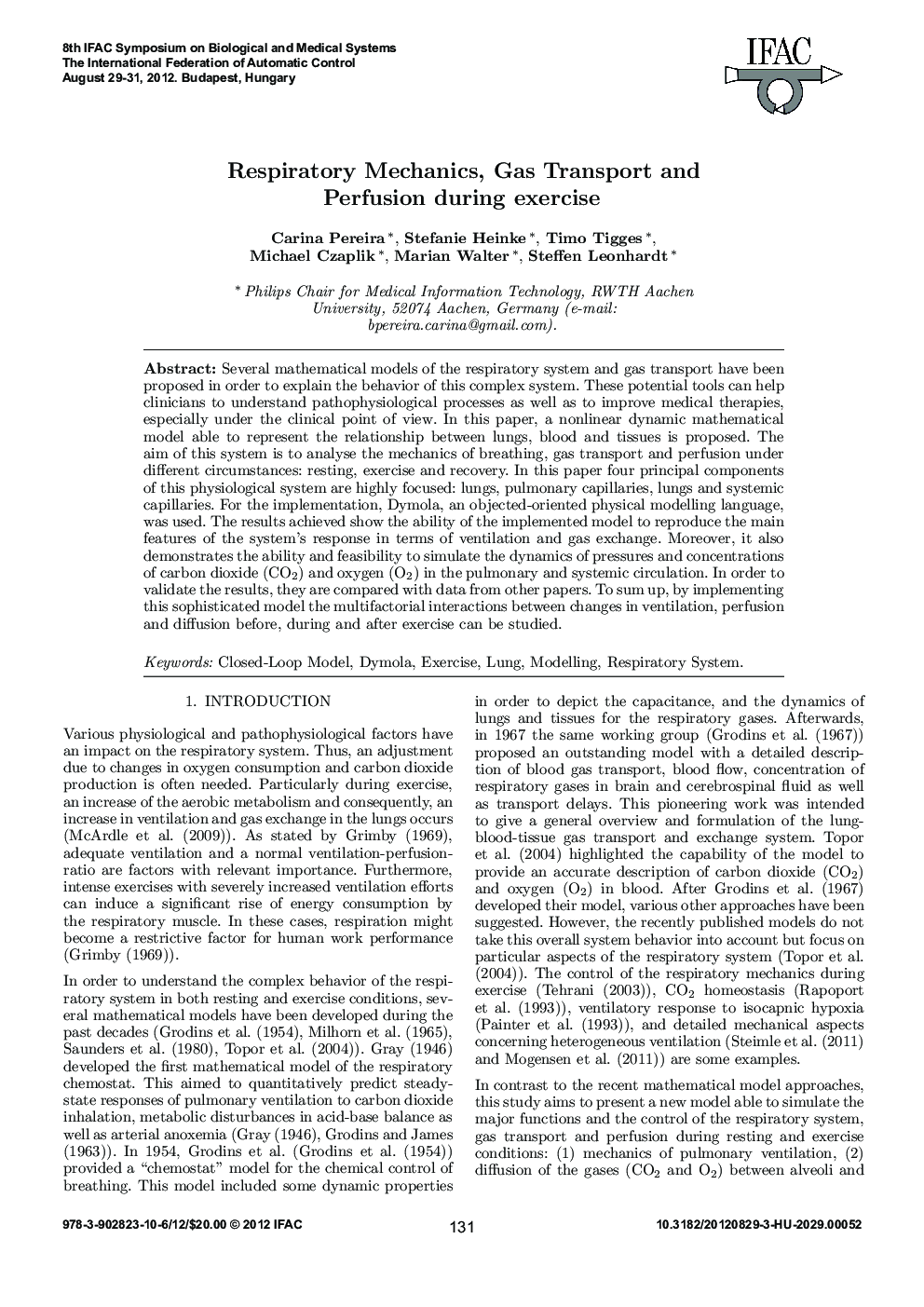| Article ID | Journal | Published Year | Pages | File Type |
|---|---|---|---|---|
| 718258 | IFAC Proceedings Volumes | 2012 | 6 Pages |
Several mathematical models of the respiratory system and gas transport have been proposed in order to explain the behavior of this complex system. These potential tools can help clinicians to understand pathophysiological processes as well as to improve medical therapies, especially under the clinical point of view. In this paper, a nonlinear dynamic mathematical model able to represent the relationship between lungs, blood and tissues is proposed. The aim of this system is to analyse the mechanics of breathing, gas transport and perfusion under different circumstances: resting, exercise and recovery. In this paper four principal components of this physiological system are highly focused: lungs, pulmonary capillaries, lungs and systemic capillaries. For the implementation, Dymola, an objected-oriented physical modelling language, was used. The results achieved show the ability of the implemented model to reproduce the main features of the system's response in terms of ventilation and gas exchange. Moreover, it also demonstrates the ability and feasibility to simulate the dynamics of pressures and concentrations of carbon dioxide (CO2) and oxygen (O2) in the pulmonary and systemic circulation. In order to validate the results, they are compared with data from other papers. To sum up, by implementing this sophisticated model the multifactorial interactions between changes in ventilation, perfusion and diffusion before, during and after exercise can be studied.
